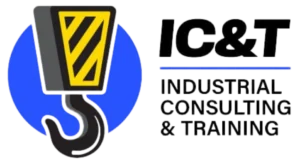
Are you having a hard time getting skilled labor in the construction or industrial industries? Do you sense your workforce is lacking the training to keep up with increasing project requirements? You’re not alone. Many companies face this challenge, and without a structured training program, employee turnover, project inefficiencies, and skill gaps only worsen.
The good news? You can take control by starting an NCCER (National Center for Construction Education and Research) apprenticeship program at your company. With NCCER’s industry-recognized curriculum, you can train workers efficiently, ensure standardized skills, and build a competent workforce that meets industry demands.
This guide will walk you through exactly how to set up your own apprenticeship program with maximum effectiveness and minimum hassle.
Understand NCCER and How It Benefits Your Business
Before jumping into implementation, you have to know why an NCCER apprenticeship program is important.
- Consistent Training: NCCER provides a nationally standardized curriculum that provides consistent, quality training to every apprentice.
- Better Workforce Performance: Properly trained employees are more productive and make fewer errors, which maximizes efficiency.
- Improved Employee Retention: Apprenticeships provide employees with a clear career pathway, resulting in increased job satisfaction and reduced turnover.
- Safety Enforcement: With safety-oriented training, accidents and expensively violating codes are greatly diminished.
- Industry Recognition: NCCER credentials are recognized throughout the construction, industrial, and energy industries, providing your business with a competitive advantage.
Example: Suppose your company is struggling with a lack of skilled welders. An NCCER apprenticeship ensures every new hire follows a structured welding program, ultimately reducing rework, material waste, and costly delays.
Meet the NCCER Accreditation Requirements
To run an NCCER apprenticeship, your company must become an Accredited Training Sponsor (ATS) or work with an Accredited Training Unit (ATU).
- Accredited Training Sponsor (ATS): If you want full control over training, apply for ATS status. This requires qualified instructors, training materials, and proper facilities.
- Accredited Training Unit (ATU): If you don’t want to become an ATS, you can partner with an existing NCCER-accredited organization, such as a trade school or technical college.
Example: A construction firm with various projects may choose ATS accreditation, which would enable them to certify and train staff on-site and maintain uniform quality and safety standards at all locations.
Develop a Structured Apprenticeship Plan
An effective apprenticeship must comprise classroom instruction, practical training, and guidance. This is how you can structure it:
- Select NCCER Curricula: Select the appropriate NCCER craft training modules that meet your industry requirements, be it carpentry, welding, electrical, or project supervision.
- Establish Training Timetables: Balance classroom training and in-workplace training for effective learning-work integration.
- Assign Trained Instructors: Make sure instructors are NCCER-certified and skilled in technical skills as well as mentoring.
- Use Performance Profiles: Monitor apprentice development through practical assessments, guaranteeing in-practice capability.
Example: If your company specializes in industrial maintenance, your program might include 70% hands-on equipment training and 30% classroom instruction, blending technical expertise with practical application.
Register Apprentices and Secure Funding
Once your program is structured, it’s time to recruit apprentices and secure financial support.
- Recruitment: Provide apprenticeships to existing employees who wish to upskill or recruit new individuals through job fairs, collaborations with high schools, or internet advertisements.
- Funding Options: Seek state apprenticeship grants, workforce development funds, or tax incentives offered for apprenticeship programs.
- NCCER Registry System: Enroll apprentices in the NCCER system so they can be awarded official credentials when they finish.
Example: A growing electrical company might partner with local high schools to recruit students into an apprenticeship program funded partially through workforce grants, reducing training costs.
Evaluate and Improve the Program Continuously
Rolling out an apprenticeship program is only the starting point. For long-term success, regularly monitor and improve the training process.
- Obtain Apprentice Feedback: Request feedback from apprentices regarding what works and what doesn’t work within the program.
- Monitor Performance Metrics: Track productivity gains, safety, and levels of retention.
- Refresh Training Materials: Ensure training materials are aligned with NCCER’s most current industry standards and best practices.
Example: A company that does HVAC and has implemented an apprenticeship program can spot high dropout rates due to scheduling issues. Through the change of training format with more evening or weekend courses, there can be a drastic decline in dropout.
Conclusion
Creating an NCCER Crane certification in Utah within your company is an effective means to build competent talent, enhance on-the-job performance, and enhance employee retention. Through a sequential process, knowing NCCER benefits, being accredited, designing training correctly, finding the financials, and improving continuously, you build an unstoppable force that addresses sector needs and develops your business.

